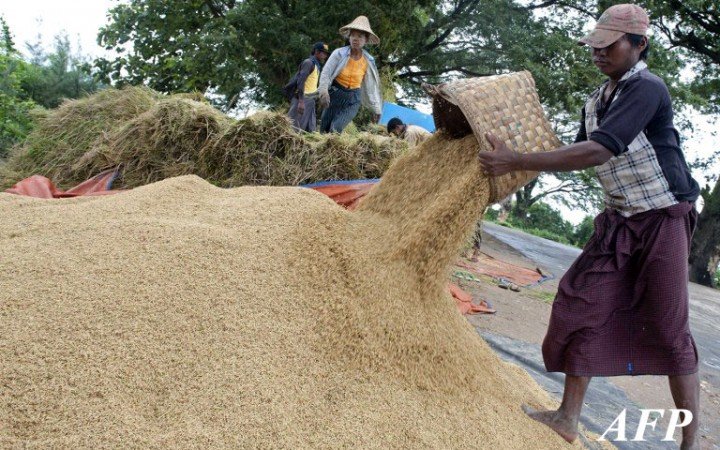Myanmar rice traders have announced that Japan has offered to import high quality rice from Myanmar for the second time in 46 years. It is a good opportunity for Myanmar’s rice industry. However, rice production may not be enough for exportation if the Government do not step up efforts to assist farmers.

Chit Khine, Chairman of the Myanmar Rice Federation, said that most farmers do not have access to agricultural loans and are unable to grow paddy. More than 100000 acres of paddy fields were also damaged by floods rendering them unsuitable for cultivation. As a result, it might be difficult to take advantage of the opportunity to export rice to Japan. He said that the government should offer assistance to farmers in need.
“The government should offer help to promote the ailing rice industry. It is only when the government provide assistance to fulfill basic requirements for paddy cultivation, that we will have surplus rice to export,” said Chit Khine.
Japanese standard
Ye Min Aung, General Secretary of the Myanmar Rice Federation, said that Japan has set high standards and more than 200 requirements for rice that they import. The Myanmar rice to be exported will have to fulfill these standards. So exporting rice to Japan is more difficult than to Europe.
Estimation
Myanmar aimed to farm 16 million acres of paddy fields this year, but only seven million acres were farmed, according to information compiled in July. Moreover, more than 100,000 acres of paddy fields in the Ayeyarwady Region were flooded. Dr. Soe Tun, Chairman of the Myanmar Farmers Association said that if the government fails to offer assistance, the total production of rice in Myanmar this year is likely to decrease.
Dr. Soe Tun said, “If the government do not offer help immediately, we will have to review whether rice production will be able meet domestic demand, before we think of exporting it.”
Requirements
To be able to export high-quality rice, there is a need for efficient rice production and processing methods; choosing the right insecticides and fertilizers, and harvesting, storing and milling rice.
Monsoon rice
Myanmar has agreed to export monsoon-sown rice production to Japan. Farmers will need help to increase rice yield and to produce high quality rice.
Chit Khine, said, “After the monsoon rice production, we will export rice to Japan. Our group has distributed seeds to grow as much rice as we can, but we do not have adequate capital. So, we need assistance from the Government.”
Flood
In the Ayeyarwady Region, 95000 acres of paddy fields in Pyapon Township, 1500 acres in Bogalay Township and more than 46000 acres in Kunchangon Township were flooded. Similarly, most of paddy fields in the Tanintharyi Region and Karen State were also flooded. More than 3,000 acres of paddy fields in Pyapon Township were completely damaged.
Rice export to Japan in May
In May, the Myanmar Agribusiness Public Corporation has exported 5,000 tons of high-quality rice to Japan's Mitsui Corporation for the first time in 46 years.
Price
During the fiscal year 2012-13, Myanmar exported 1.6 million tons of rice, but more than 80 percent of the rice were low quality '25 mark' rice that are priced at $350 per ton.
Chit Khine trader said that if Myanmar can export high-quality rice with a price range of US$400 to US$500, it will be more beneficial for the rice industry.



